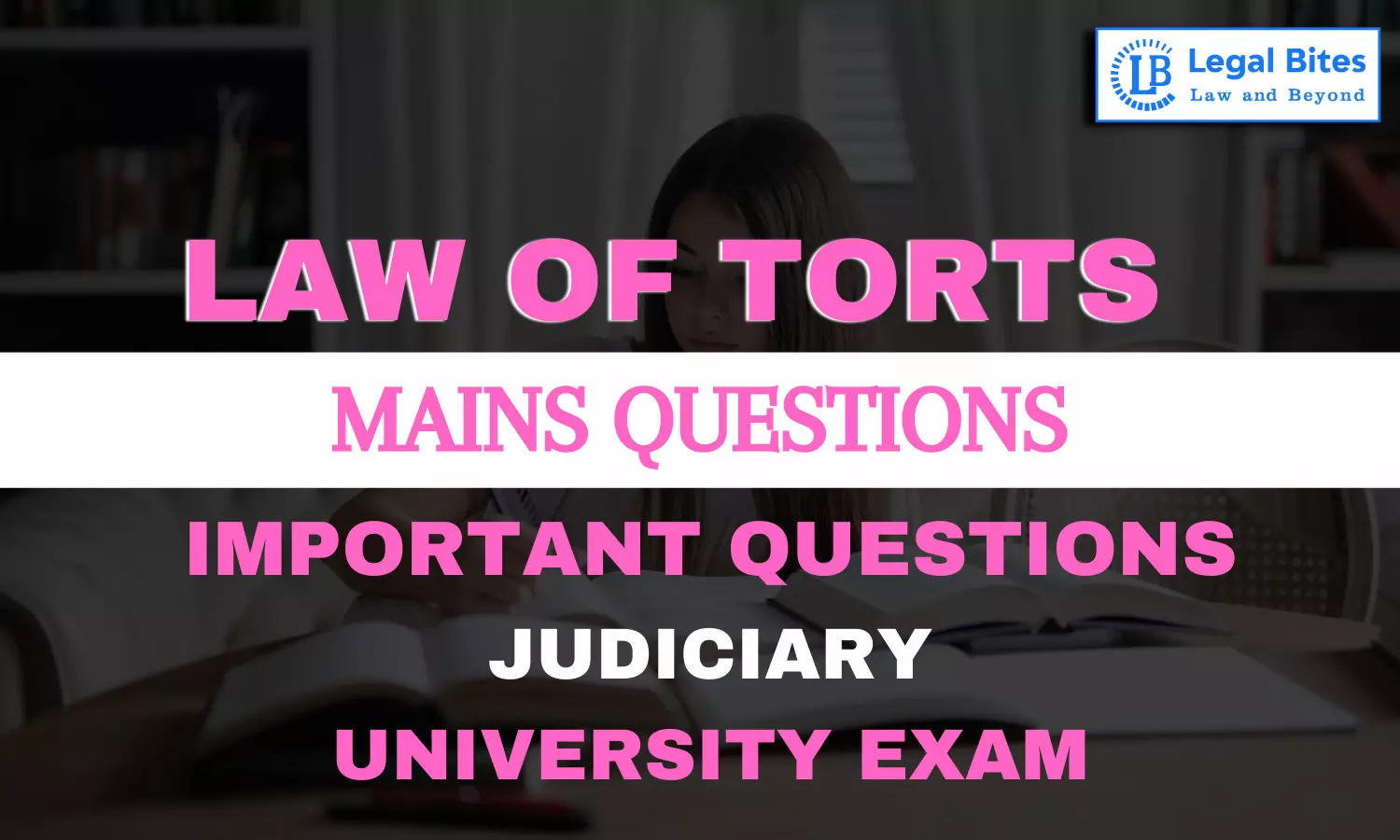Discuss the principle of law laid down in Rylands v. Fletcher and state the applicability of this principle in present scenario.
Find the question and answer of Law of Torts only on Legal Bites.

Question: Discuss the principle of law laid down in Rylands v. Fletcher and state the applicability of this principle in present scenario. Find the question and answer of Law of Torts only on Legal Bites. [Discuss the principle of law laid down in Rylands v. Fletcher and state the applicability of this principle in present scenario.]AnswerThe principle of law laid down in Rylands v. Fletcher, (1868) LR 3 HL 330, is often referred to as the rule of strict liability. The case arose in...
Question: Discuss the principle of law laid down in Rylands v. Fletcher and state the applicability of this principle in present scenario.
Find the question and answer of Law of Torts only on Legal Bites. [Discuss the principle of law laid down in Rylands v. Fletcher and state the applicability of this principle in present scenario.]
Answer
The principle of law laid down in Rylands v. Fletcher, (1868) LR 3 HL 330, is often referred to as the rule of strict liability. The case arose in the mid-nineteenth century, where the defendant, Fletcher, had employed independent contractors to construct a reservoir on his land, which then caused water to escape onto the plaintiff's land, Rylands. The water caused damage to the plaintiff's mine, and it was discovered that the reservoir had been built on top of an old mine shaft. The plaintiff sued the defendant, and the court held that the defendant was strictly liable for the damage caused to the plaintiff's property.
Issues
(a) First, whether the defendants were liable irrespective of the proof of negligence on their own part, or on the part of anyone engaged by them to erect the reservoir.
(b) Second, whether they, though personally guiltless of any negligence, were liable for the negligence of the contractor employed by them to construct the reservoir.
The principle laid down in Rylands v. Fletcher is that a person who brings onto their land anything that is likely to cause damage if it escapes is strictly liable for that damage, regardless of whether they have been negligent or not. The key elements of the rule are that the defendant must bring something onto their land, which must be likely to cause damage if it escapes, and that the damage must be caused by the escape of the thing from the defendant's land.
This principle has been applied in a range of situations, including cases involving the escape of water, gas, and other substances, as well as cases involving dangerous animals, electricity, and even noise. The rule of strict liability has been justified on the basis that it provides a means of allocating risk, where the person who creates the risk is best placed to manage it and is therefore responsible for the harm caused by the risk.
Present Applicability of law laid down in Rylands v. Fletcher
In the present scenario, the principle of strict liability is still applicable, although there have been some developments in the law. In particular, the principle has been modified by the courts to take into account the nature of the risk and the reasonableness of the defendant's conduct. For example, in Transco plc v. Stockport Metropolitan Borough Council, [2004] 2 AC 1, the House of Lords held that the rule of strict liability does not apply to the escape of natural things, such as water unless the escape is due to some artificial arrangement or the defendant has been negligent.
Similarly, in Cambridge Water Co Ltd v. Eastern Counties Leather plc, [1994] 1 All ER 53, the House of Lords held that the rule of strict liability does not apply to a defendant who was not aware of the risk of escape or could not have reasonably foreseen it. This was a case where a chemical was released from the defendant's land and contaminated the plaintiff's groundwater supply. The court held that the defendant was not strictly liable because they had taken all reasonable precautions to prevent the escape, and the escape was caused by an unforeseeable event.
The principle of strict liability has also been subject to some criticism, particularly on the basis that it can be unfair to impose liability without fault. Some commentators have argued that the principle should be replaced with a fault-based system, where liability is only imposed on the defendant if they have been negligent or breached a duty of care.
The principle of strict liability laid down in Rylands v. Fletcher is still applicable in the present scenario, although it has been modified by the courts to take into account the nature of the risk and the reasonableness of the defendant's conduct. The principle provides a means of allocating risk, where the person who creates the risk is best placed to manage it and is therefore responsible for the harm caused by the risk. However, the principle has also been subject to criticism, particularly on the basis that it can be unfair to impose liability without fault.

Mayank Shekhar
Mayank is an alumnus of the prestigious Faculty of Law, Delhi University. Under his leadership, Legal Bites has been researching and developing resources through blogging, educational resources, competitions, and seminars.
